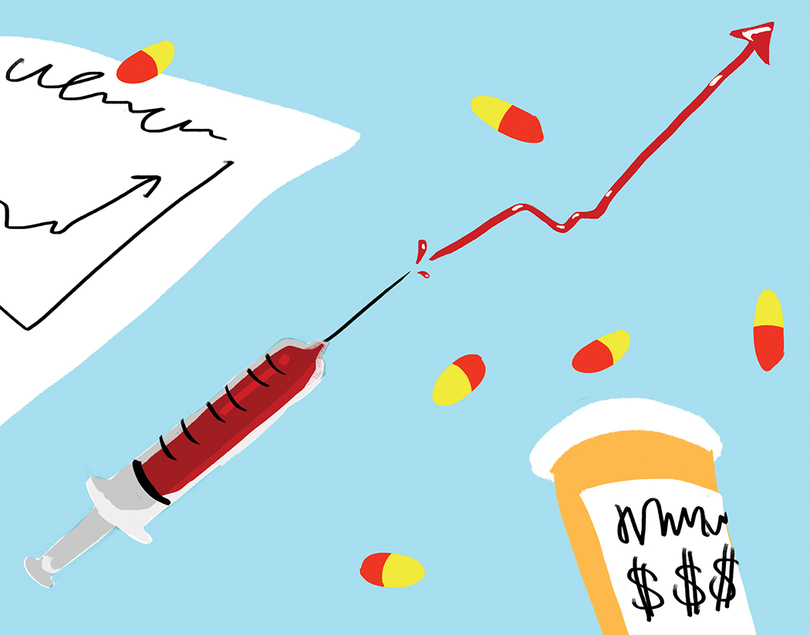Ask the Experts: Professor explains implications of Affordable Care Act rate increases

In some states, Affordable Care Act plan prices will grow more than 100 percent Delaney Kuric | Head Illustrator
UPDATED: Nov. 16 at 12:20 a.m.
Prices for the Affordable Care Act health plans were announced recently and they will increase sharply next year. In some states, plans’ prices will grow more than 100 percent. The vast majority of Americans will not be affected by these increases, though, an expert said.
The Daily Orange spoke with Greg Stevens, an associate professor of clinical family medicine at the Keck School of Medicine at the University of Southern California, about why this made headlines and why it matters on a national scale.
The Daily Orange: Why are Affordable Care Act health plans rising in price?
Greg Stevens: Every year, health insurance prices rise. That’s been the history of this country since we’ve had private health insurance. Health insurance has tended to go up at a higher rate than other sectors.
In the past five or six years, we have rises in the cost that have hovered around 3 percent, which has been tremendous. Everybody’s been excited about the very low growth in the cost of health insurance. As part of that trend, nobody has really expected the rates to stay that low forever. We’ve always expected for health insurance premiums to go up again at a little bit of a faster rate.
It’s not unexpected at all. It’s big news, a big headline, but it fits with where we expect things to go.
The D.O.: Who do these rising prices affect?
G.S.: You have to know one thing about health care reform. Most people get their health insurance from their employer, or if you’re older you get it from Medicare, or if you’re lower-income, you get it from Medicaid. That’s the bulk of our population.
For most people there’s really no news here. But for people who didn’t have insurance through one of those mechanisms, (they are) required to go buy insurance from what are called exchanges.
For the people shopping on the exchanges, that’s where we’re seeing larger price increases, probably less than 7 percent of the population in the U.S.
The D.O.: What is an exchange?
G.S.: It is basically an Amazon.com for health insurance. If you shop on those exchanges, you’ll see all sorts of health insurance plans selling you products. It’s designed to increase competition.
Every state has its own exchange. Except that a lot of the Republican controlled states said a sort of “screw you” to the federal government and said, “We aren’t going to develop our own exchange, we’ll leave it to the feds to do it.” They call it healthcare.gov.
The D.O.: How will people afford health care now?
G.S.: Federal government also chips in subsidies for people to afford these plans. That’s one thing that’s offsetting the pain that people might feel. Many people qualify for a subsidy.
Every year, you sort of renew with the health insurance plan that you’ve got at the rate they set for you. What most people should do is shop around.
The D.O.: Is this a problem to be solved or just a fact of life in the United States?
G.S.: Nobody knows exactly why health insurance rates go up. There are lots of answers that people will give. The cost of living, inflation, medical supplies and rents, increased salaries, then the insurance companies have to raise their prices to pay for all of that. People talk about malpractice and pharmaceuticals to drive these prices up, too.
The thing that could be solved by policy is that we know what’s driving the exorbitant growth in health care. … There are three things.
One, it’s partly a natural correction because many insurance companies bid low to try to attract customers, but now that they’ve got people enrolled they can self-correct.
The second thing is that we didn’t get quite as good of a mix of the people buying insurance on these exchanges. We tend to get more sick people enrolling in the plans than healthy people, as you would expect, because sick people want to have insurance coverage to help pay their bills.
The hard part is convincing healthy people that they need to pay $200 a month or $300 a month to have health insurance.
The third one is that in some places, it’s been hard to attract insurance plans to sell on the exchanges. California has one insurance exchange called Covered California and there are eight or nine insurance companies selling on the exchange. But in California, because it’s so big, some of the insurance companies don’t sell in certain areas. If you’re in Los Angeles or San Francisco, no problem, you have a choice between eight or nine insurance plans. But if you live in a rural area, you may only have the choice between one or two plans. And that problem has popped up all over the country. There are some areas all over the states where people just don’t have many options. So you get less competition and higher prices.
The D.O.: What are the alternatives?
G.S.: If people are really hard hit by the price increase, they’ll probably just go uninsured.
The D.O.: Is the timing of this price rise important?
G.S.: This is all happening at the pinnacle of the politics season. Anything that can be taken as negative is going to be amplified as a disaster. The Democrat side will probably downplay this.
I don’t think this alone will move people, but it will add fuel to the fire for people that are already anti-health reform.
CORRECTION: In a previous version of this article, Medicare and Medicaid were misstated. The Daily Orange regrets these errors.




